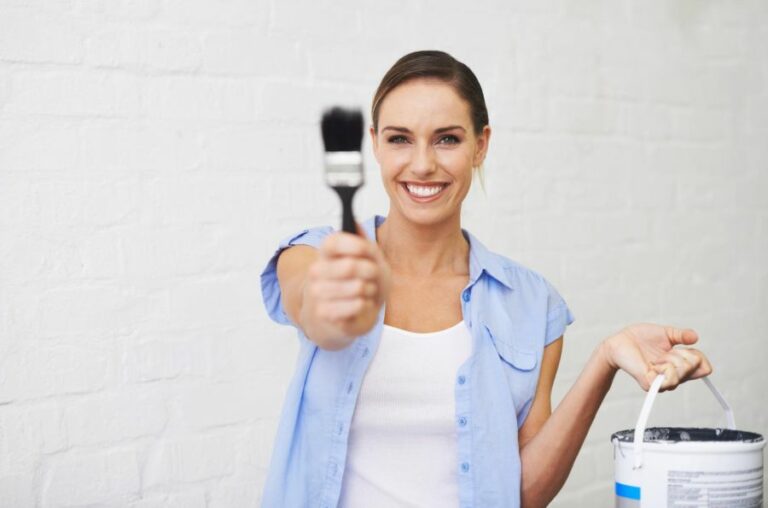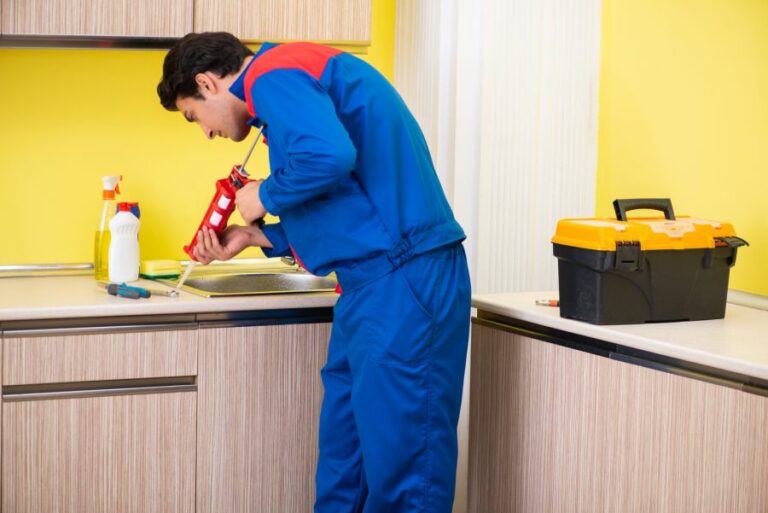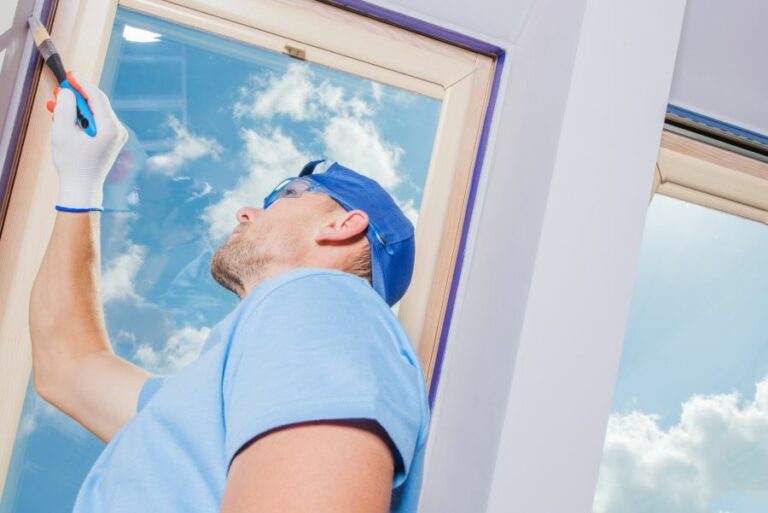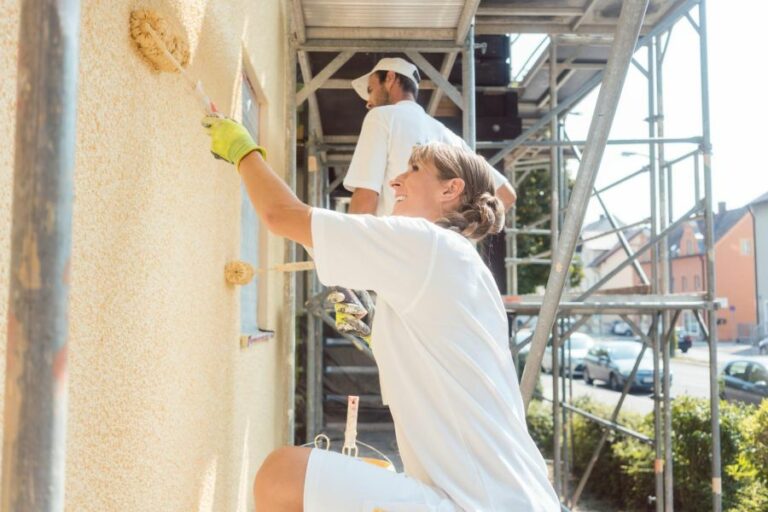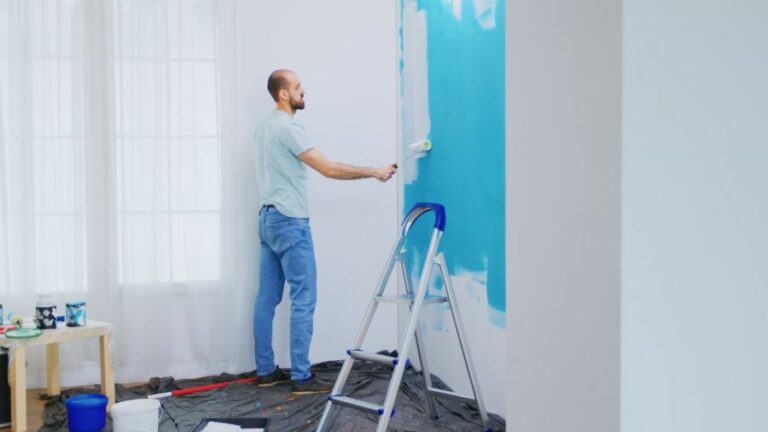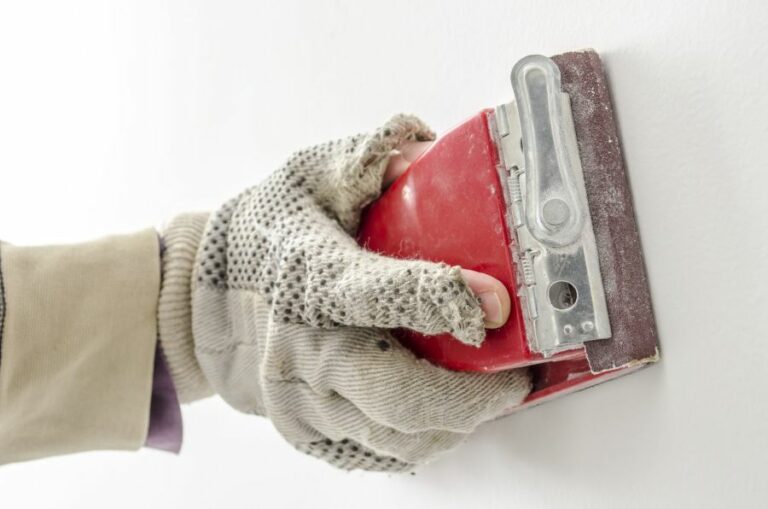Maximize Paint Bond Strength With Surface Profiling
Are you looking to achieve maximum paint adhesion and a flawless, long-lasting finish? Look no further, as we’ve got the ideal solution to optimize your paint bonding process and ensure top-notch results. Surface profiling is the key to substantially improving paint bond strength, and we have the expertise to walk you through this incredible technique.
Maximize paint bond strength with surface profiling:>
Surface profiling is crucial for maximizing paint bond strength and ensuring the longevity of a paint coating. It involves preparing the surface by creating an appropriate texture that promotes adhesion, preventing common issues like delamination, peeling, and cracking. Techniques include abrasive blasting, chemical etching, and mechanical methods such as grinding, sanding, and scarifying. Proper surface preparation, cleaning, and consultation with professionals are essential for optimal results.

Discover the secrets to achieving exceptional paint adhesion with surface profiling techniques, ideal for various applications. Read on as we dive into the world of surface preparation, ensuring long-lasting and durable finishes for your projects. Don’t miss out on these expert tips!
Contents
- 1 Enhance Paint Adhesion Power Through Surface Profiling
- 1.1 • Importance of Surface Profiling
- 1.2 • Preparing the Surface: Cleaning and Degreasing
- 1.3 • Abrasive Blasting: Powering Up Paint Adhesion
- 1.4 • Chemical Etching: Enhancing Paint Bond At the Molecular Level
- 1.5 • Creating a Mechanical Profile: Grinding, Sanding, and Scarifying
- 1.6 • Final Recommendations
- 2 What Methods Improve Paint Adhesion Performance?
- 3 Exploring Surface Texture’s Impact on Bond Strength
- 4 Key Factors Influencing Coating and Substrate Adhesion
- 5 What Test Ensures Optimal Paint Adhesion Results?
Enhance Paint Adhesion Power Through Surface Profiling
• Importance of Surface Profiling
A significant factor that contributes to the longevity and effectiveness of a paint coating is the adhesion strength between the paint and the substrate.
Surface profiling plays a vital role in achieving optimal adhesion and preventing common issues such as delamination, peeling, and cracking of the paint. It refers to the process of preparing a surface before paint application by creating an appropriate texture that will promote bond strength.
With extensive experience in painting and coating applications, I have witnessed the positive impact of proper surface profiling.
• Preparing the Surface: Cleaning and Degreasing
Before performing any surface profiling technique, it is crucial to ensure that the surface is free from any contaminants such as dust, grease, oil, or rust. These contaminants can severely compromise the paint’s adhesion to the surface.
Thorough cleaning and degreasing of the substrate using appropriate solvents and cleaning agents is highly recommended.
If dealing with rusted surfaces, consider using rust converters or rust removers. These products chemically convert rust into a stable and paintable surface. The choice of cleaning method will depend on the type of substrate, the nature of contaminants, and the required end result.
• Abrasive Blasting: Powering Up Paint Adhesion
Abrasive blasting is an effective method for achieving an ideal surface profile. It involves forcibly propelling abrasive materials, such as sand, glass beads, or steel grit, against the substrate. This process effectively removes contaminants, roughens the surface, and increases the surface area.
The increased surface area helps create a stronger mechanical bond between the paint and the substrate.
There are various types of abrasive blasting, including:
- Sandblasting
- Grit blasting
- Soda blasting
- Dry ice blasting
The choice of abrasive material and blasting technique will depend on the substrate and project requirements. It is essential to consult an expert to determine the most suitable method for a particular surface.
• Chemical Etching: Enhancing Paint Bond At the Molecular Level
Chemical etching is another method for surface profiling, depending on the substrate material. This technique involves the application of chemical solutions, such as acids, to the surface.
These solutions react with the substrate, creating a microscopically rough texture. The etched surface promotes stronger adhesion by increasing the molecular interaction between the paint and the substrate.
Chemical etching is commonly used on metallic surfaces such as aluminum, steel, and galvanized metals. It is essential to select the appropriate etching solution for the substrate material and to follow the manufacturer’s instructions for application and safety measures.
• Creating a Mechanical Profile: Grinding, Sanding, and Scarifying
For certain substrates, such as concrete or wood, mechanical methods of surface profiling might be most suitable. These techniques include grinding, sanding, and scarifying.
Grinding uses abrasive wheels to remove a thin layer from the surface, creating a rough texture that promotes adhesion. Grinding is especially useful for leveling uneven surfaces, removing coatings, and cleaning concrete substrates.
Sanding uses abrasive papers or discs to create a fine surface profile on wood substrates. Selecting the appropriate sandpaper grit size and using a consistent sanding technique is crucial for achieving a uniform surface finish.
Scarifying involves the use of a scarifier machine equipped with cutting discs to create an aggressive surface profile on concrete substrates. This method is ideal for removing thick coatings or leveling severely damaged surfaces while also creating a suitable profile for paint adhesion.
• Final Recommendations
The appropriate surface profiling method depends on several factors, such as the substrate type, existing coatings, and project requirements.
Consultation with professionals and adherence to industry standards, such as those outlined by the SSPC (The Society for Protective Coatings) and NACE International, is crucial for ensuring a successful paint application.
By understanding and implementing proper surface profiling techniques, you can significantly increase the bond strength between the paint and substrate, leading to a durable and long-lasting paint coating.
What Methods Improve Paint Adhesion Performance?
Paint adhesion refers to the ability of paint to stick firmly to the surface it is applied on, without any peeling, flaking, or chipping. Proper paint adhesion is a crucial factor in achieving a professional-looking, long-lasting paint job.
• Prep Your Surface Properly
– Clean the Surface
The first step in increasing paint adhesion is, to begin with a clean surface. Dirt, dust, and other contaminants can interfere with paint bonding to the surface.
I recommend using a mild detergent and water solution to clean most surfaces, followed by thorough rinsing with clean water to remove any soap residue. For exterior projects, a pressure washer can be an effective tool to remove dirt and debris.
– Remove Loose Paint
Before applying new paint, it is essential to remove any loose or peeling paint from the surface. While a paint scraper or wire brush can work on small areas, an electric sander or paint stripper is often more efficient for larger projects.
This tool can be found at your local hardware store or rented from a tool rental center like Home Depot.
– Sand and Smooth
Sanding the surface ensures a smooth, even substrate for paint application and provides a roughened texture, allowing for better adhesion. I recommend using medium-grit sandpaper for most surfaces and following up with fine-grit sandpaper to achieve a smooth finish.
Always sand in the direction of the grain, especially on wood surfaces. Once sanding is complete, be sure to remove all dust with a tack cloth or vacuum.
• Choose the Right Primer
Primer is an essential component in achieving optimal paint adhesion. It provides a barrier between the substrate and paint, ensuring a uniform finish and promoting adhesion. Choosing the right primer for your project depends on the substrate and paint type.
- Bonding primer: This type of primer is specifically designed to promote adhesion on hard-to-paint surfaces such as glazed tile, metal, or non-porous plastics. Be sure to check the label to verify compatibility with the paint you plan to use.
- Oil-based primer: An oil-based primer is an excellent choice for wood surfaces, as it penetrates deep into the fibers, providing a strong bond between the paint and substrate.
- Latex primer: A latex primer works well on most surfaces, including drywall and plaster, and is compatible with latex paint.
Always apply primer according to the manufacturer’s instructions, allowing ample drying time before applying the paint.
• Apply Paint Correctly
– Stir Well
Before applying paint, it is essential to stir the contents of the container thoroughly using a paint stirrer. Paint pigment can settle to the bottom of the can, which can affect color consistency and adhesion if not dispersed evenly through the paint.
– Thin the Paint if Necessary
In some cases, it may be necessary to thin the paint slightly to improve its flow and adhesion properties. The information on the paint can should indicate whether thinning is required, as well as the recommended solvent or water ratio for thinning.
– Use the Right Application Technique
Selecting the appropriate application technique, whether it be brush, roller, or spray, depends on your surface, type of paint, and desired finish.
Always follow the manufacturer’s instructions for proper application, and use high-quality tools for the best results. Applying multiple thin coats of paint instead of one thick coat will also help prevent peeling and cracking, ensuring a more robust bond between the paint and substrate.
– Consider Temperature and Humidity
Temperature and humidity can significantly impact paint adhesion. I advise you to follow the paint manufacturer’s recommendations regarding ideal application conditions.
In general, latex paint performs best at temperatures between 50°F and 85°F, while oil-based paint is more forgiving at temperatures between 40F and 90F. High humidity can also cause issues with paint adhesion, so it’s best to avoid painting on humid or rainy days when possible.
• Conclusion
Increasing paint adhesion is crucial for achieving a professional, long-lasting paint job. By following the expert tips and techniques outlined in this article, you can improve the bond between your paint and substrate, ensuring a beautiful, durable finish on your next project.
Step | Description |
|---|---|
1. Clean the surface | Remove dirt, grease, and dust to ensure a clean surface for the paint to adhere to. |
2. Sand the surface | Use sandpaper to create a slightly rough surface, which helps the paint adhere better. |
3. Use a primer | Applying a primer before painting can help increase adhesion, as well as provide a uniform surface. |
4. Choose the right paint | Use paint formulated for the specific surface you’re working with to ensure proper adhesion. |
5. Apply multiple thin coats | Applying multiple thin coats of paint, rather than one thick layer, can help to improve adhesion. |
6. Allow adequate dry time | Ensure that each layer of paint is allowed to dry completely before applying the next layer. |
Exploring Surface Texture’s Impact on Bond Strength
Surface roughness is a vital factor when considering the bond strength between two materials. We will discuss the influence of surface roughness on bond strength, the methods used to modify surface roughness, and the applications where bond strength is of prime importance.
• How Surface Roughness Impacts Bond Strength
The bond strength between two materials is directly related to the surface roughness of the materials being joined.
When the surfaces have a rough profile, they offer a greater area of contact, allowing more bonding points for adhesion. This results in a stronger bond as there are ample points of connection, improving overall adhesion.
A rough surface also aids in mechanical interlocking, which occurs when the adhesive penetrates into the micro-voids and irregularities on the surface. This mechanical anchor increases the bond strength between the two materials.
Additionally, rough surfaces can lead to increased surface energy, thereby improving the wetting of the adhesive onto the substrate and enhancing bond strength.
Conversely, if a surface is too smooth, it offers limited bonding points, leading to a weaker bond. However, it is essential to strike a balance as excessively rough surfaces may result in the inability of the adhesive to fill all voids, leading to trapped air or contaminants and reducing bond strength.
Recommendation: Optimize surface roughness to find the appropriate balance to achieve maximum bond strength.
• Methods to Modify Surface Roughness
Various methods can be used to modify surface roughness to achieve the desired bond strength. Some of these methods are:
– Abrasion
Abrasion is a widely used method to increase surface roughness. It involves mechanically roughening the surface by using an abrasive material. Techniques like sanding, grinding, or grit blasting are commonly used for abrasion.
- Pros: This method is easy to implement and economical.
- Cons: Uneven abrasion may lead to non-uniform surface roughness, affecting bond strength.
Recommendation: Exercise care when using abrasion to ensure uniform surface roughness.
– Chemical Etching
Chemical etching is performed by applying a chemical solution to the surface that reacts with the material, altering the surface topography. This method provides a uniformly roughened surface, contributing positively to bond strength.
- Pros: It offers controlled and uniform surface roughness.
- Cons: Requires specialized chemicals, disposal of waste can be an issue.
Recommendation: Consider the chemical etching method for applications where a uniform and controlled roughness is needed.
– Plasma Treatment
Plasma treatment is a commonly used method to modify surface roughness in industries such as electronics and automotive. Plasma is a highly reactive state of matter that can provide highly controlled surface roughening while increasing surface energy.
- Pros: Can process a wide range of materials, excellent control over surface roughness.
- Cons: Requires specialized equipment, may be more expensive.
Recommendation: Use plasma treatment for precision surface roughening and bond strength enhancement.
• Applications where Bond Strength is Crucial
There are various fields where bond strength plays a vital role in the quality and longevity of the product. Some examples are:
– Aerospace
In aerospace, the structural integrity of various components, such as aircraft wings, depends on the bond strength between the materials used. Surface roughness is a significant factor in ensuring the highest possible bond strength, adding to the durability and strength of the component.
– Electronics
Electronic devices and circuits rely on strong bonds to hold components together and maintain electrical connections. Adequate surface roughness ensures robust adhesion between the substrates, circuit boards, and other components, contributing to device longevity.
– Automotive
Automobile manufacturing involves joining various materials like metals, plastics, and composites. Strong bonds are needed to ensure the structural integrity of vehicles. Surface roughness plays an essential role in achieving the ideal bond strength.
– Medical Devices
Medical devices such as implants and prosthetics must adhere to strict requirements for durability and strength. The bond strength between various components and materials is crucial for the performance and longevity of these devices.
In conclusion, surface roughness is paramount to achieving strong bonds between materials. Understanding the impact of surface roughness on bond strength and selecting the appropriate methods to modify it can greatly improve the quality and longevity of products in various industries.
Key Factors Influencing Coating and Substrate Adhesion
The adhesive strength between a coating and a substrate is a critical property that influences the durability, performance, and overall quality of the coated product.
A good understanding of the factors affecting this adhesive strength is essential for ensuring the effectiveness of the coating process.
• Surface Preparation and Cleaning
One of the fundamental factors determining adhesive strength is the surface preparation and cleaning of the substrate. In order for a coating to adhere properly to the substrate, the surface must be free from contaminants such as dust, dirt, grease, and oils.
Surface cleaning can be achieved through various methods like solvent cleaning, detergent cleaning, and abrasive cleaning. Adequate surface preparation, such as roughening the surface, can also improve adhesive strength by increasing the surface area available for contact with the coating.
I recommend following the cleaning procedures recommended by the coating manufacturer to ensure optimal adhesive strength.
• Surface Energy and Wetting
The surface energy of both the coating and the substrate plays a significant role in adhesive strength. The interaction between the coating and the substrate is directly influenced by their respective surface energies.
High surface energy substrates tend to show better adhesion with coatings, as they allow for better wetting and spreading of the coating material.
Low surface energy materials, such as polyethylene or polytetrafluoroethylene (PTFE), may require special treatments or primers to improve adhesion. To optimize adhesive strength, ensure that the surface energy of the coating is compatible with that of the substrate.
• Coating Type and Chemistry
The choice of the coating material and its specific chemistry is another important factor that can significantly affect adhesive strength.
Different types of coatings, such as epoxy, polyurethane, or acrylic, have varying chemical structures and properties that influence their interaction with the substrate.
Coating formulations may also contain additives that could enhance or decrease adhesion. It is important to select a coating type that is compatible with the substrate and has the desired characteristics for the given application.
• Coating Thickness and Application
The thickness and uniformity of the applied coating can have a considerable impact on adhesive strength. Proper application techniques are crucial to ensure consistent and uniform coverage.
Over-application of the coating can result in poor adhesion due to excessive thickness, while under-application could lead to insufficient coverage and uneven coating layers, leaving exposed areas on the substrate.
Following the manufacturer’s recommendations and using the appropriate application techniques can help achieve the optimal coating thickness for improved adhesive strength.
• Curing and Drying
The curing and drying process for coatings can have a significant effect on adhesive strength. Coatings typically require a certain amount of time to cure and develop their full adhesive potential, which can vary by the type of coating and environmental conditions.
Inadequate curing time or improper drying conditions can result in reduced adhesive strength due to incomplete cross-linking, solvent evaporation, or bonding of the coating.
It is essential to follow recommended curing times and conditions to ensure maximum adhesive strength. Additionally, controlling factors such as temperature and humidity can help optimize the curing process.
• Environmental Factors
Environmental factors, such as temperature, humidity, and UV exposure, can also influence the adhesive strength between the coating and the substrate.
These factors can cause changes in the properties of the materials, such as thermal expansion or degradation, which may affect adhesion.
Understanding the environmental conditions that the coated product will be exposed to is important for selecting the appropriate coating and ensuring its long-term adhesive strength.
• Coating-Substrate Interface Interactions
The interaction between the coating and the substrate at their interface plays a key role in determining adhesive strength. Factors such as chemical bonding, mechanical interlocking, and the formation of an interphase region can all contribute to the overall adhesive strength.
Optimizing these factors through proper surface preparation, cleaning, and selection of compatible materials can lead to improved adhesion.
• Conclusions and Recommendations
The adhesive strength between a coating and a substrate is influenced by a multitude of factors, including surface preparation and cleaning, surface energy and wetting, coating type and chemistry, coating thickness and application, curing and drying, environmental factors, and interface interactions.
By carefully considering and addressing these factors, it is possible to achieve optimal adhesive strength in coated products.
I recommend following the manufacturer’s recommendations and guidelines, as well as ensuring that the surface preparation, coating choice, and application techniques are appropriate for the specific substrate and application in question.
What Test Ensures Optimal Paint Adhesion Results?
A successful paint job requires maximum adhesion between the paint and the surface it’s being applied to.
• Importance of Surface Preparation
Surface preparation is the key to ensuring maximum paint adhesion. A clean, well-prepared surface allows the paint to form a strong bond, preventing peeling or flaking in the future. Some common techniques for surface preparation include:
- Cleaning: Remove dirt, grease, and other contaminants from the surface. For metal surfaces, degreasing agents or solvents may be used. For wood surfaces, use a mild detergent and water solution.
- Abrasion: Sand the surface to create a rough texture that helps the paint adhere better. Abrasive blasting or sandpaper may be used, depending on the surface material.
- Priming: Apply a primer to the surface to enhance paint adhesion and provide a uniform surface. Primers are available for various surfaces, including wood, metal, and concrete.
– Adhesion Tests for Paint
Several tests can be conducted to ensure maximum adhesion between the paint and the surface. Some commonly used tests include:
Cross-Hatch Test
The cross-hatch test, also known as the adhesion tape test, is a widely accepted test method for evaluating the adhesion of paint systems.
This test involves applying a specific pattern of incisions to the painted surface using a razor blade or similar tool. Once the incisions are made, pressure-sensitive tape is applied and then rapidly removed. The paint removal (if any) is assessed based on a scale.
To learn more about the cross-hatch test, refer to the American Society for Testing and Materials (ASTM) standard D3359.
Pull-Off Adhesion Test
The pull-off adhesion test involves attaching a specialized tool to the painted area, which then applies an increasing amount of force to pull the paint coating away from the surface.
The force applied at the point of paint detachment is recorded, and the results are compared to the acceptable minimum value for the specific paint system.
For more information on the pull-off adhesion test, you can refer to ASTM standard D4541.
Knife Test
The knife test is a simple, practical method of assessing paint adhesion, particularly for thick or multi-layered coatings on metal surfaces. Using a sharp knife, the paint is cut through, forming an “X.”
A consistent, clean cut indicates good adhesion, while chipping, peeling, or flaking suggests poor adhesion. Keep in mind that this test is more subjective and less quantifiable than other tests.
– Factors Affecting Paint Adhesion
Various factors can negatively impact paint adhesion, including:
- Surface Contamination: Dirt, grease, or other contaminants present on the surface can hinder paint adhesion. Thorough surface cleaning is critical in ensuring good adhesion.
- Surface Texture: A smooth surface may not provide enough surface area for the paint to bond properly. Adequate surface roughness is essential for ensuring strong adhesion.
- Paint Type: Different types of paint (e.g., water-based, oil-based, epoxy) have different adhesion properties, and some may not adhere well to certain surfaces. It’s essential to choose the appropriate paint type based on the surface material and application.
- Environmental Conditions: Temperature, humidity, and wind can all impact paint adhesion. It’s crucial to follow the manufacturer’s recommendations for painting in specific environmental conditions.
- Application Technique: Proper painting techniques (e.g., brush, roller, spray) and even coating thickness are essential for ensuring maximum adhesion.
• Expert Recommendations for Maximum Paint Adhesion
As an experienced painting professional, I recommend practicing the following steps to achieve proper paint adhesion:
- Thoroughly clean and prepare the surface to remove any contaminants.
- Select the appropriate primer and paint type based on the surface material and intended use.
- Follow the manufacturer’s guidelines for environmental conditions and application techniques.
- Perform adhesion tests, such as the cross-hatch test, to ensure maximum paint adhesion.
By following these steps and performing adhesion tests, you can ensure a successful, long-lasting paint job that will stand the test of time.

